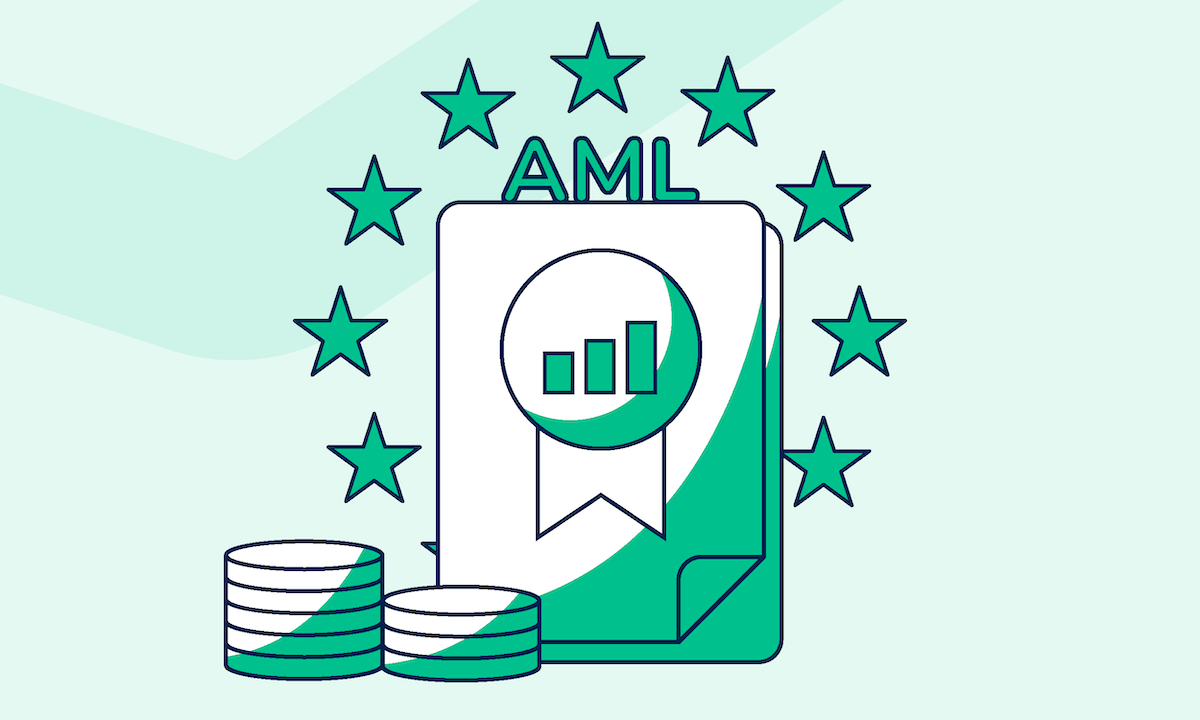Digital onboarding solutions allow banks and financial institutions to streamline their KYC processes, reduce human errors, and save valuable time. But digital onboarding is not limited only to banks. Over the past few years, more and more companies covered by AML laws have started using digital KYC solutions to optimize their processes, reduce costs, and deliver modern experiences.
What is digital onboarding in banking?
In banking, digital onboarding refers to automating and simplifying KYC processes with the help of digital solutions.
Digital onboarding solutions allow banks to:
- collect information and official documents from customers
- automatically perform sanctions and PEP screenings
- assess the risk level associated with new customers
- establish the nature and purpose of the business relationship
- meet GDPR & AML data retention requirements
With digital onboarding, the entire KYC process happens online. No more time spent scheduling and attending in-person meetings or mailing documents back and forth.
The benefits of digital onboarding in banking
Nowadays, more and more banks are turning to digital onboarding solutions since they enable them to work more efficiently and deliver superior experiences to customers.
Cost savings & increased productivity
Traditional KYC processes are costly and time-consuming. By eliminating manual work and paper-based processes, digital onboarding significantly reduces costs and helps bank employees save valuable time.
Automating the processes associated with client onboarding allows bank employees to focus on high-value activities instead of tedious administrative tasks.
Enhanced customer experience
A lengthy onboarding process can seriously hurt the customer experience. That’s why unnecessary in-person meetings and paper-based processes have no place in today’s digital world.
Digital onboarding solutions enable people to verify their identity and open bank accounts in no time, directly from their smartphone. This makes the KYC processes much more convenient for new clients who don’t have to show up at the bank anymore.
Better security
Data confidentiality and privacy are huge concerns for customers nowadays. If customers think their data is not safe with you, they will not hesitate to switch to a competitor.
Sending and receiving confidential information over insecure communication channels such as email is risky. Lack of security and chaotic usage of emails lead to documents often getting lost, being kept past their legal retention period, or falling into the wrong hands.
With digital onboarding solutions, you don’t have to worry about documents getting lost or being mishandled. All KYC documentation is stored in the cloud and can be easily accessed by authorized users from any device connected to the Internet. End-to-end encryption and configurable user permissions protect the data from being accessed by unauthorized third parties, such as hackers or employees who don’t have the necessary privileges.
To ensure compliance with the GDPR and AML data retention requirements, you can schedule the documents stored in the system for automatic deletion.
Onboarding new clients with Penneo KYC
Penneo KYC is a digital onboarding software that helps banks perform KYC checks in seven simple steps.
1. Look up your client in the system database
Type the name of your client in the system. The new client can be either an individual or a legal person.
The lookup function will search PEP and sanctions lists and official business registers for a match.
If your client is an individual, the system will show you whether or not he is on a PEP or sanctions list. In the case of companies, the system will retrieve their VAT numbers and beneficial owners from official business registers.
2. Conduct the risk assessment
Next, the system will ask you a few questions about your customer to make it easier for you to assess their risk level. Examples of questions include:
- Is the customer interested in a high-risk product such as correspondent banking, private banking, etc.?
- Is the client doing business in high-risk third countries?
- Is the client operating in a high-risk industry such as real estate, gambling, crypto, etc.?
3. Prepare and send the identity verification request
Select the documents and information you need from the customer and hit send. All you have to do now is relax – our system will guide your customer through the rest of the process.
4. The customer uploads the documents
Once the new customer receives the request, they can easily take pictures of the documents with their smartphones and upload them to the platform. They can also fill in any other required information and send it back to you via the app.
5. Approve or decline the received documents
When you receive the documents and information back from the customer, you can choose to accept or reject them. If you approve them, the business relationship can start.
6. Manage the risk assessment
Penneo KYC allows you to easily access, review, and update the customer risk assessment. If any change is detected (e.g., the customer becomes a PEP), the system will notify you, so you can take appropriate action.
7. Securely store customer data
Your customer data is securely stored online in compliance with GDPR & AML requirements. You can easily access and monitor the documents as needed.
Book a meeting with one of our experts to discuss how Penneo KYC can help your business simplify KYC processes!





